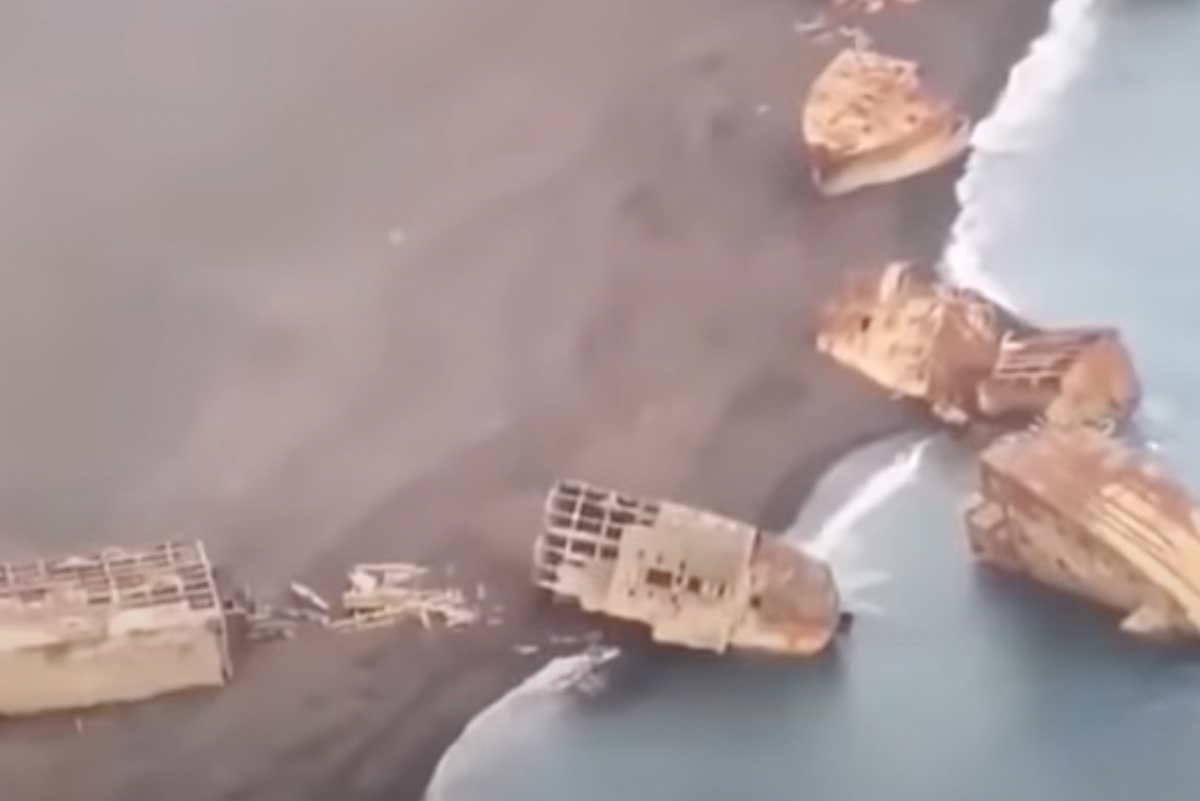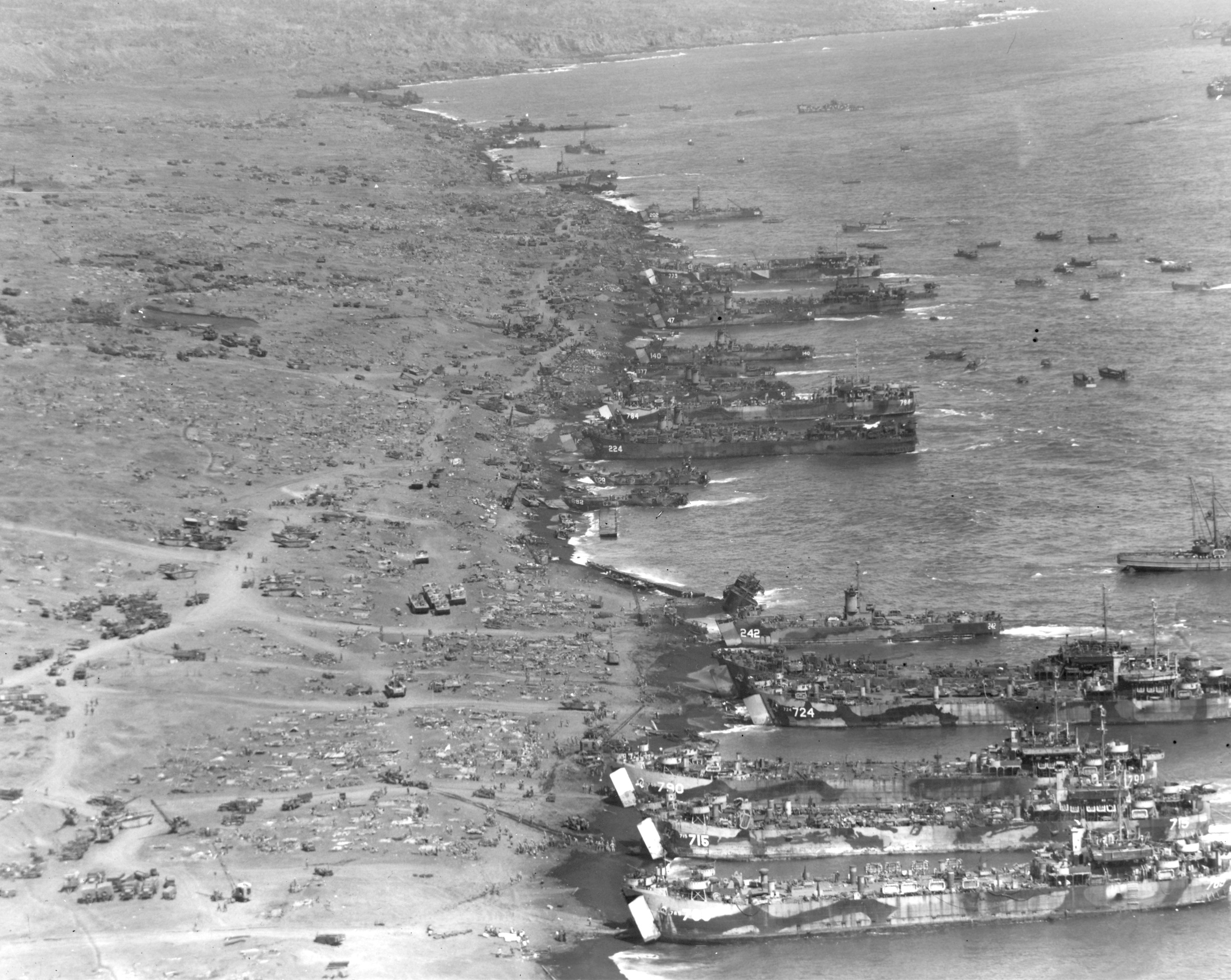Enduring nearly 5,000 minor earthquakes a year, those living in Japan rarely notice the almost daily tectonic shifts.
According to Voyapon, however, “around 160 earthquakes with a magnitude of 5 or higher can shake the Japanese archipelago each year.”
A walloping a 6.1 magnitude earthquake hit Tokyo in October, knocking out power and shutting down train lines. In the waters off Iwo Jima, a ghostly scene emerged in its wake — the hulls of American ships ringing the island.
The geological shock raised the seafloor near the volcanic island. Numerous ships were heaved from their watery graves, their topsides covered only by sky 76 years after their wartime sinkings.
These casualties were not combat ships, reports Coffee or Die, they were other watercraft intentionally scuttled by the U.S. Navy in 1945 to create a breakwater and artificial harbor.

“Several of [the shipwrecks] are reinforced concrete barges, ships built to support naval operations and not necessarily for any direct combat role,” according to The Drive. “Four of them are former cargo vessels, at least one of which is Japanese according to naval documents.”
On February 16, 1945, the U.S. Navy started a “softening up” operation of the Japanese-held island. Though only a little over four miles long, Iwo Jima was key to General Curtis Lemay’s bomber offensive on Japan’s home islands.
Of the 30,000 Marines who were to wade ashore on the first day, it was predicted by Rear Admiral Raymond Spruance that reinforcements would not be needed to take the island.
Three days later the Marines were met by 21,000 Japanese soldiers and a dizzying network of caves, tunnels, and concrete pillboxes that a determined enemy used to deadly effect. The tenacious defense at Iwo forced Spruance to commit approximately 40,000 more men to the campaign.
Despite the iconic flag raising atop Mount Suribachi on February 23, the bloody battle would continue for nearly another month. The 36-day slog horrified military planners and American citizens alike. In the end, 6,821 Marines were killed with another 19,217 wounded. And of the Japanese, 212 defenders – only 1 percent of the original garrison – were still alive to surrender.
Three months after Iwo Jima fell, the U.S. Navy began constructing an artificial harbor around the island, but swiftly abandoned those plans in June 1945 after a typhoon struck the artificial breakwater, causing severe damage to the structure.
Now, writes The Drive, “the beach where U.S. forces landed in 1945 is now over 50 feet above sea level” and the relics of that devastating war are “‘moving’ from offshore relics to eerie onshore monoliths.”





